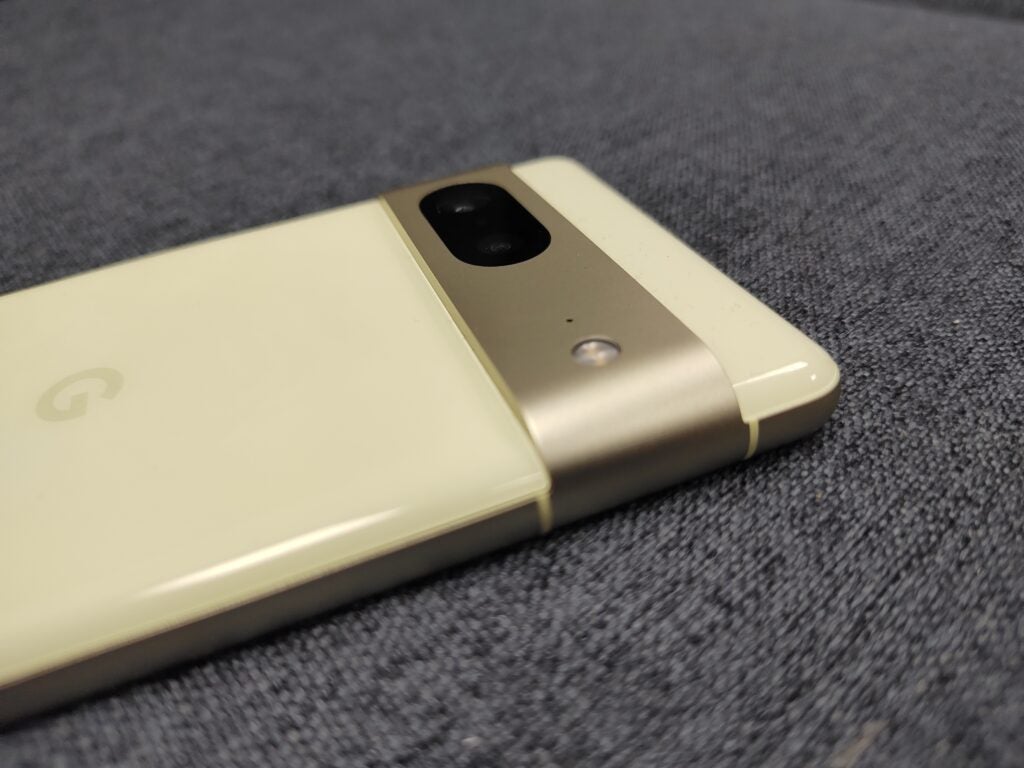OPINION: The Pixel 7 is an excellent phone, but unfortunately it doesn’t let down one of its most impressive features?
I thoroughly enjoyed my time reviewing the Pixel 7, Google’s latest smartphone. Not only does it offer the excellent photography skills we’ve come to expect from the range, taking breathtaking photos in a variety of lighting conditions, but it also has a good screen and sleek design, making it a truly enticing prospect given its relatively affordable price.
However, on the last point – the elegant design – I have one reservation. And it’s such a nitpicky issue that you might not think it’s worth mentioning at all; but I think it’s this kind of daily irritation that can disproportionately color your experience with a product. I’m talking about the shiny, metallic camera band that wraps around the back of the phone.

When it was revealed, it was the physical and aesthetic feature that attracted the most attention; ostensibly a stark upgrade from the rather featureless black band that graced the Pixel 6, it instead added a touch of class and premium air. I still think those impressions are absolutely true for the looks of the device, but it’s a different story for the ergonomics.
What you might not have realized when the device was unveiled was that this camera module protrudes quite a bit from the back and, more importantly, has very hard edges with almost sharp right angles rather than smooth curves. There are several different problems that this presents when using the phone.
First, those hard edges act as little shelves for dust that quickly and easily collects at the right angles and isn’t easy to get out with a quick wipe. This is a shame because it detracts from the otherwise very elegant look of the phone, which has a smooth and glossy back panel in several different subtle colors.
Second, it also creates a certain hooking hazard. While, for me at least, the band sits right above where I place my finger when holding the phone and therefore doesn’t bother me, I’ve noticed that when I put the phone in or out of my jeans pockets, it can often catch on the lining.
Finally, like other phones that have protruding camera modules, this means the handset won’t lie flat on a surface if you lay it on its back. However, I think this is much less important for general usability.
In my experience, the smoothed, subtler camera bumps you find on some other flagship phones (like the Oppo Find X5 Pro) don’t encounter these issues at all, so I find it a little confusing that Google tore up the design rules just to introduce a few ergonomic pitfalls that are very apparent even after a few hours of using the phone.

Can a case solve these problems? Perhaps, but I have two answers to this query; first, this case should always be considered an optional purchase and not necessary to overcome an inherent design defect of the product; and second, that the actual case that Google produced for the phone still leaves significant cracks in the corners to collect dust.
Of course, Google isn’t the only offender here when it comes to design choices that have a negative day-to-day impact. For example, Max Parker noted in his review of the iPhone 14 Pro Max that the flat-edge screen, at a massive 6.7 inches, is much less comfortable to hold than it would be if the edges were curved around the sides (as we’ve seen on devices like OnePlus 10T or Honor Magic 4 Pro).
You might dismiss these complaints out of hand, believing that processing power or camera performance are far more important. Well yes, these are key attributes that define the capabilities of such devices, but physical features that annoy you every time you use your phone not only detract from your enjoyment of a phone (even one that’s otherwise as adorable as the Pixel 7) , but and but we should expect better; given the amount of money and research that goes into smartphone design, I remain baffled that such rudimentary issues still arise.







